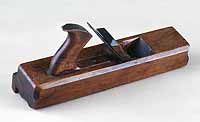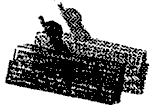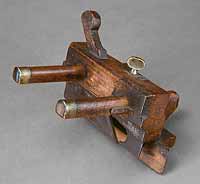Page content
Planes
Planes are chisel-like blades mounted in stocks or bodies. They assist the worker by holding the blade at the correct angle, by regulating the cutting depth, and sometimes by positioning the cut on the wood.

Bench planes were used to plane wood to the desired thickness and to make it straight and smooth. They could be used on either the wood's broad surfaces or its edges.

Molding planes were made in a great variety of shapes. Hollows and rounds were versatile planes used to cut simple round and hollow shapes, which could be combined to make more complicated moldings. Other moldings planes cut only one design. Since a different plane was required for each shape and size molding, woodworkers often owned other planes or large numbers of these planes.
Joining Planes

Rabbet planes cut simple steps for lapped joints or wide grooves to receive another piece of wood.

Fillister planes were rabbet planes with built-in guides that determined the width and depth of the step.

Pairs of tongue-and-groove planes cut matching grooves and tongues on the edges of boards so that they could be joined.

Coopers' crozes cut the groove in barrel staves for the barrel head fit.

